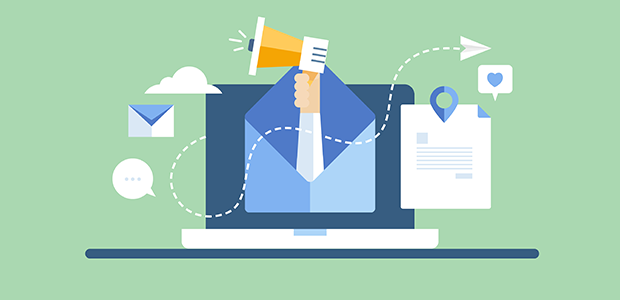
Is 2023 the comeback year for email marketing?
With marketing budgets being squashed, marketers are expected to do more with less. Teams are leaner, cookie policies are changing, Google analytics 4 has been released and, with fewer people commuting and out shopping, OOH is being put to the test. These changes have created a mini storm within most marketing departments which, for years, have been collecting and analysing data, finding patterns and trends and adapting their tactics and budgets to improve their ROI.
All this knowledge is about to be tested. The landscape for marketers is changing and they need to batten down and ready themselves before it’s too late.
While everyone’s gaze was fixed on creating the next content series to rival their competitors on social, Email marketing vendors have been quietly working away in the background and re-invented themselves as Marketing Automation platforms.
At the end of April, The Data & Marketing Association (DMA UK)‘s published their latest research, the ‘Consumer Email Tracker 2023’ report, which delves into our relationship with email.
The survey, which asked over 2,000 consumers how they feel about their inbox, revealed “a growing number of consumers stating they find email brand messages useful.” In 2021 the figure was just 15% - it has now doubled to 32%.’
Consumers continue to rank email first for receiving offers and sales (64% rank it first); new products/services (53%); and advice, information and reviews (44%) making it an intrinsic part of any marketing strategy.
Hot on the heels of this report, Spotler released a unique interactive email marketing benchmark dashboard that allows marketers to drill into highly relevant, tactical data. The data set of over 18 billion emails can be filtered by industry, send times, campaign sizes, business type and country to give users an average open or click rate specific to their campaign.
A quick look at the data from the benchmark showed that the travel sector gets a terrific open rate of 57.32% - which is nearly 21% above average. It also showed that most companies send their campaigns on a Tuesday or a Thursday, normally in the morning, with barely any activity over the weekend.
These reports and tools come at a time when marketers need something dependable - and that is theirs.
McKinsey reported that ‘organisations must create more personalised and meaningful connections with customers at every interaction. Leaders who successfully do so can drive a 10-30% increase in marketing spend efficiency’ Spotler’s International Email Marketing Benchmark 2023 data supports this showing that smaller targeted campaigns to niche segmented audiences perform better than larger ones.
An average email campaign of 500-1000 recipients had an open rate of over 40%, whereas campaigns with over 250,000 dipped to less than 30%.
Driving your first party data strategy
With the increased consumer awareness around privacy and third party cookies and the imminent removal of them, having a direct connection with an audience via an email address becomes infinitely more valuable.
Ian Truscott, CMO of Spotler Group explained: “An email address is becoming the most valuable touch point we have with our audience. It is a direct connection that isn’t dependent on a social media algorithms or someone else’s platform that the owners could change or stop - just ask creators that built their presence on Google Plus before it was shut down in 2019! Most importantly you own an email address, whereas you rent an audience on social media.”
Boosting your customer loyalty and subscriptions
Building a loyal customer base works for everyone. Customers like the ease of it, businesses like the revenue model it provides. It really is a no brainer. But ensuring the cost per acquisition isn’t higher than the lifetime value (LTV) is undoubtedly tricky.
Email provides marketers with the ability to nurture their database economically. The key to nurturing is understanding the behaviour of the user. With sophisticated segmentation, personalisation and the ability to present the user with content that they have consistently clicked on, significant gains in loyalty can be achieved.
Have the marketing teams of 2023 got what they need to develop their email marketing strategy?
Marketing teams need the right martech stack, people with the skills to use them and a human approach to data and insights.
Ian said: “Martech buyers have a lot of choice. It’s easy to sign up to services, for an instant fix to a simple problem. It’s often only later down the line that they realise they’re with a faceless SaaS vendor offering limited support which unfortunately yields poor results for the user. We offer clients ‘Software WITH a Service’ so they are able to realise the full value of their investment.”
Just when you thought Email marketing was the fax machine of the digital marketing world, the technology vendors of 2023 are determined to prove it’s not fading away.

